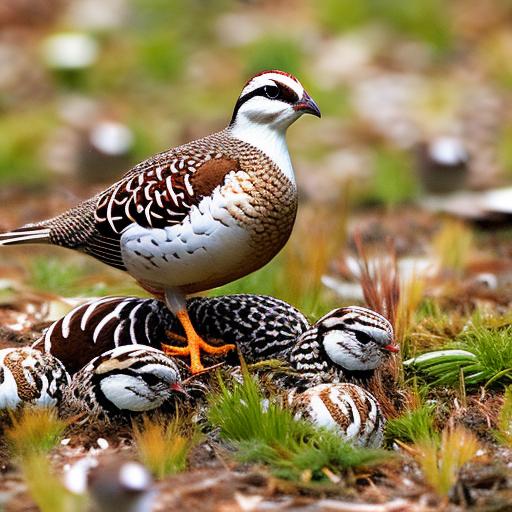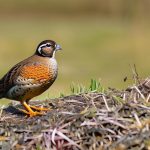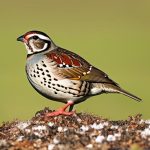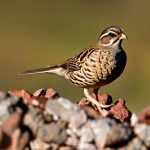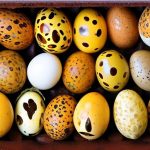Keeping Bobwhite Quail and Kings White Quail together can be a rewarding experience for bird enthusiasts. Both species are known for their beautiful plumage and unique calls, making them a popular choice for backyard aviaries and hobby farms. However, it is important to understand the compatibility of these two quail species, as well as the necessary steps to create a suitable habitat, manage social dynamics, and ensure proper nutrition and health care. By following the guidelines outlined in this article, bird keepers can successfully coexist Bobwhite Quail and Kings White Quail in the same environment, providing a rich and diverse experience for both the birds and their caretakers.
Key Takeaways
- Bobwhite quail and Kings white quail can be kept together in the same habitat with proper understanding and management.
- Understanding the compatibility of the two quail species is crucial for successful cohabitation.
- Creating a suitable habitat involves providing adequate space, shelter, and environmental enrichment for both quail species.
- Feeding and nutrition for both quail species should be carefully balanced to meet their specific dietary needs.
- Managing social dynamics and behavior, as well as implementing health and disease management strategies, are essential for the successful coexistence of Bobwhite quail and Kings white quail.
Understanding the Compatibility of Bobwhite Quail and Kings White Quail
Before attempting to keep Bobwhite Quail and Kings White Quail together, it is crucial to understand the compatibility of these two species. While both quail species have similar requirements in terms of habitat, diet, and social behavior, there are some key differences that need to be taken into consideration. Bobwhite Quail, for example, are known for their strong territorial instincts and can become aggressive towards other birds, especially during the breeding season. On the other hand, Kings White Quail are more docile and can be easily intimidated by more assertive birds. Understanding these differences is essential for creating a harmonious environment for both species. It is also important to consider the sex ratio when keeping these quail species together, as an imbalance can lead to aggression and stress. By carefully observing the behavior of both species and providing adequate space and resources, bird keepers can ensure a peaceful coexistence between Bobwhite Quail and Kings White Quail.
Creating a Suitable Habitat for Both Quail Species
Creating a suitable habitat for Bobwhite Quail and Kings White Quail is essential for their well-being and overall happiness. Both species require a spacious aviary with plenty of hiding spots, such as shrubs, grassy patches, and small shelters. The aviary should also be equipped with suitable nesting boxes to accommodate the natural breeding behaviors of both quail species. It is important to provide a variety of perches at different heights to accommodate the different flying abilities of Bobwhite Quail and Kings White Quail. Additionally, the aviary should be predator-proof to ensure the safety of the birds. Providing a diverse range of vegetation and substrate will also help to mimic the natural environment of these quail species, promoting their physical and mental health. By creating a suitable habitat that meets the needs of both Bobwhite Quail and Kings White Quail, bird keepers can ensure a harmonious coexistence between the two species.
Feeding and Nutrition for Bobwhite Quail and Kings White Quail
Proper nutrition is essential for the health and well-being of Bobwhite Quail and Kings White Quail. Both species are omnivorous and require a balanced diet consisting of seeds, grains, insects, and fresh greens. It is important to provide a high-quality game bird feed that is specifically formulated for quail, as well as offering supplemental treats such as mealworms, fruits, and vegetables. It is also important to provide access to clean water at all times, as quail can quickly become dehydrated, especially in hot weather. When keeping Bobwhite Quail and Kings White Quail together, it is important to monitor their feeding behavior to ensure that all birds have access to food and are not being outcompeted by more dominant individuals. By providing a varied and nutritious diet, bird keepers can ensure the health and vitality of both quail species.
Managing Social Dynamics and Behavior
Managing social dynamics and behavior is crucial when keeping Bobwhite Quail and Kings White Quail together. Both species have complex social structures and hierarchies, which can lead to aggression and stress if not properly managed. It is important to provide enough space and resources to prevent competition between birds, as well as monitoring their behavior for signs of aggression or distress. Providing multiple feeding stations and hiding spots can help to reduce conflict between individuals, while also allowing more timid birds to access food and shelter without fear of intimidation. It is also important to consider the sex ratio when keeping these quail species together, as an imbalance can lead to aggression and stress. By carefully observing the behavior of both species and providing adequate space and resources, bird keepers can ensure a peaceful coexistence between Bobwhite Quail and Kings White Quail.
Health and Disease Management for Both Quail Species
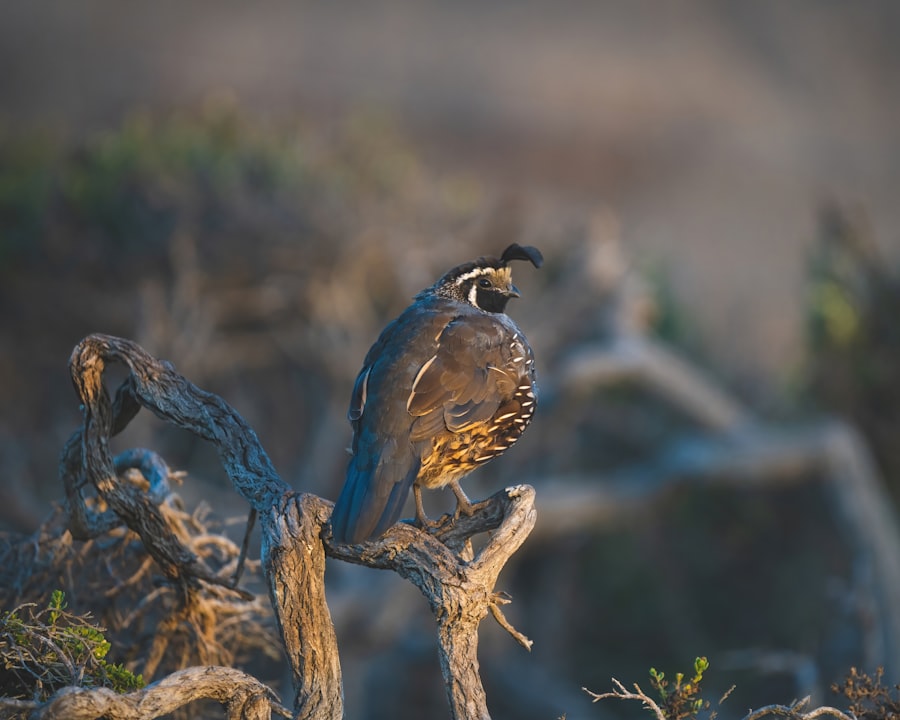
Maintaining the health of Bobwhite Quail and Kings White Quail is essential for their long-term well-being. It is important to provide regular health checks for both species, monitoring their weight, plumage condition, and overall behavior for signs of illness or distress. Additionally, it is important to provide a clean and hygienic environment for the birds, regularly cleaning their aviary and providing fresh bedding material. It is also important to be aware of common diseases that can affect quail, such as coccidiosis, respiratory infections, and parasites, and take appropriate measures to prevent and treat these conditions. Providing a balanced diet, access to clean water, and regular exercise will also help to maintain the overall health of Bobwhite Quail and Kings White Quail. By taking proactive measures to manage the health and disease of both quail species, bird keepers can ensure a long and healthy life for their feathered friends.
Tips for Successful Coexistence of Bobwhite Quail and Kings White Quail
Successfully coexisting Bobwhite Quail and Kings White Quail requires careful planning and management. It is important to provide a suitable habitat that meets the needs of both quail species, including adequate space, hiding spots, perches, nesting boxes, and predator-proofing measures. Additionally, providing a varied and nutritious diet, monitoring social dynamics, managing health and disease, and being aware of common behavioral traits are all essential for maintaining a harmonious environment for both species. By following these tips and guidelines, bird keepers can ensure a successful coexistence between Bobwhite Quail and Kings White Quail in their aviary or backyard setting.
In conclusion, keeping Bobwhite Quail and Kings White Quail together can be a rewarding experience for bird enthusiasts. By understanding the compatibility of these two quail species, creating a suitable habitat, providing proper nutrition, managing social dynamics and behavior, maintaining health and disease management, and following tips for successful coexistence, bird keepers can ensure a harmonious environment for both Bobwhite Quail and Kings White Quail. With careful planning and management, bird keepers can enjoy the beauty and diversity of these two quail species in their aviary or backyard setting.
If you’re considering keeping bobwhite quail and king’s white quail together, it’s important to understand the compatibility and care requirements of these two species. To ensure the well-being of both types of quail, it’s crucial to provide appropriate housing, diet, and environmental conditions. For more insights on creating a harmonious environment for different poultry species, check out Poultry Wizard’s article on “Can Geese Eat Chicken Feed?”. Understanding the dietary needs of various poultry species is essential for maintaining their health and happiness.
FAQs
Can bobwhite quail and king’s white quail be kept together?
Yes, bobwhite quail and king’s white quail can be kept together in the same aviary or enclosure as long as certain conditions are met.
What are the key considerations when keeping bobwhite quail and king’s white quail together?
It is important to provide enough space for both species to move around comfortably and to establish separate areas for nesting and roosting. Additionally, it is crucial to monitor the birds for any signs of aggression or stress.
What should be the ratio of bobwhite quail to king’s white quail when keeping them together?
A good ratio to aim for is one male to three females for both bobwhite quail and king’s white quail. This helps to minimize competition and aggression among the birds.
What should the diet consist of when keeping bobwhite quail and king’s white quail together?
The diet should include a high-quality game bird feed, supplemented with fresh greens, insects, and grit. It is important to ensure that both species have access to the appropriate food and nutrients.
Are there any specific housing requirements for keeping bobwhite quail and king’s white quail together?
The aviary or enclosure should have plenty of hiding spots, perches, and nesting boxes to accommodate both species. It is also important to provide adequate ventilation and protection from predators.
What are the potential challenges of keeping bobwhite quail and king’s white quail together?
One potential challenge is managing the different breeding behaviors of the two species. Additionally, it is important to monitor the birds closely for any signs of illness or aggression.
Meet Walter, the feathered-friend fanatic of Florida! Nestled in the sunshine state, Walter struts through life with his feathered companions, clucking his way to happiness. With a coop that’s fancier than a five-star hotel, he’s the Don Juan of the chicken world. When he’s not teaching his hens to do the cha-cha, you’ll find him in a heated debate with his prized rooster, Sir Clucks-a-Lot. Walter’s poultry passion is no yolk; he’s the sunny-side-up guy you never knew you needed in your flock of friends!

